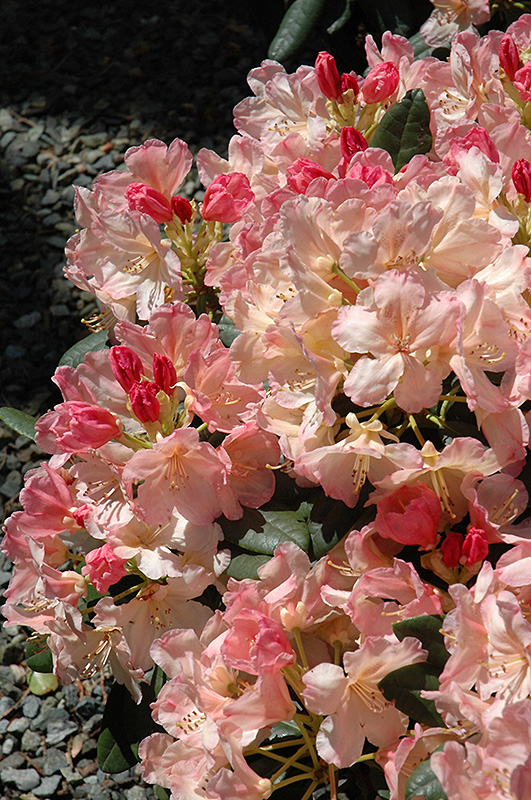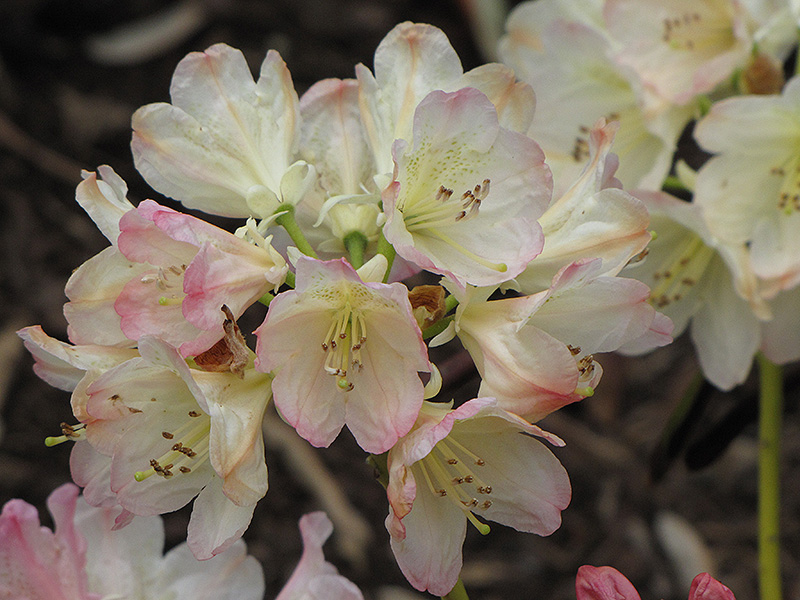Percy Wiseman Rhododendron
Rhododendron 'Percy Wiseman'
Height: 5 feet
Spread: 5 feet
Sunlight:
![]()
![]()
Hardiness Zone: 7a
Description:
Bright red buds produce beautiful pink blooms that fade to creamy white with yellow throats on this majestic shrub in mid spring; an accent shrub that will definitely make an impact; absolutely must have well-drained, highly acidic and organic soil
Ornamental Features
Percy Wiseman Rhododendron is covered in stunning clusters of lightly-scented creamy white trumpet-shaped flowers with buttery yellow throats and pink streaks at the ends of the branches in late spring, which emerge from distinctive red flower buds. It has dark green evergreen foliage. The glossy narrow leaves remain dark green throughout the winter.
Landscape Attributes
Percy Wiseman Rhododendron is an open multi-stemmed evergreen shrub with an upright spreading habit of growth. Its relatively coarse texture can be used to stand it apart from other landscape plants with finer foliage.
This is a relatively low maintenance shrub, and should only be pruned after flowering to avoid removing any of the current season's flowers. It has no significant negative characteristics.
Percy Wiseman Rhododendron is recommended for the following landscape applications;
- Accent
- Mass Planting
- General Garden Use
Planting & Growing
Percy Wiseman Rhododendron will grow to be about 5 feet tall at maturity, with a spread of 5 feet. It tends to be a little leggy, with a typical clearance of 1 foot from the ground, and is suitable for planting under power lines. It grows at a slow rate, and under ideal conditions can be expected to live for 40 years or more.
This shrub does best in full sun to partial shade. You may want to keep it away from hot, dry locations that receive direct afternoon sun or which get reflected sunlight, such as against the south side of a white wall. It requires an evenly moist well-drained soil for optimal growth, but will die in standing water. It is very fussy about its soil conditions and must have rich, acidic soils to ensure success, and is subject to chlorosis (yellowing) of the foliage in alkaline soils. It is somewhat tolerant of urban pollution, and will benefit from being planted in a relatively sheltered location. Consider applying a thick mulch around the root zone in winter to protect it in exposed locations or colder microclimates. This particular variety is an interspecific hybrid.



